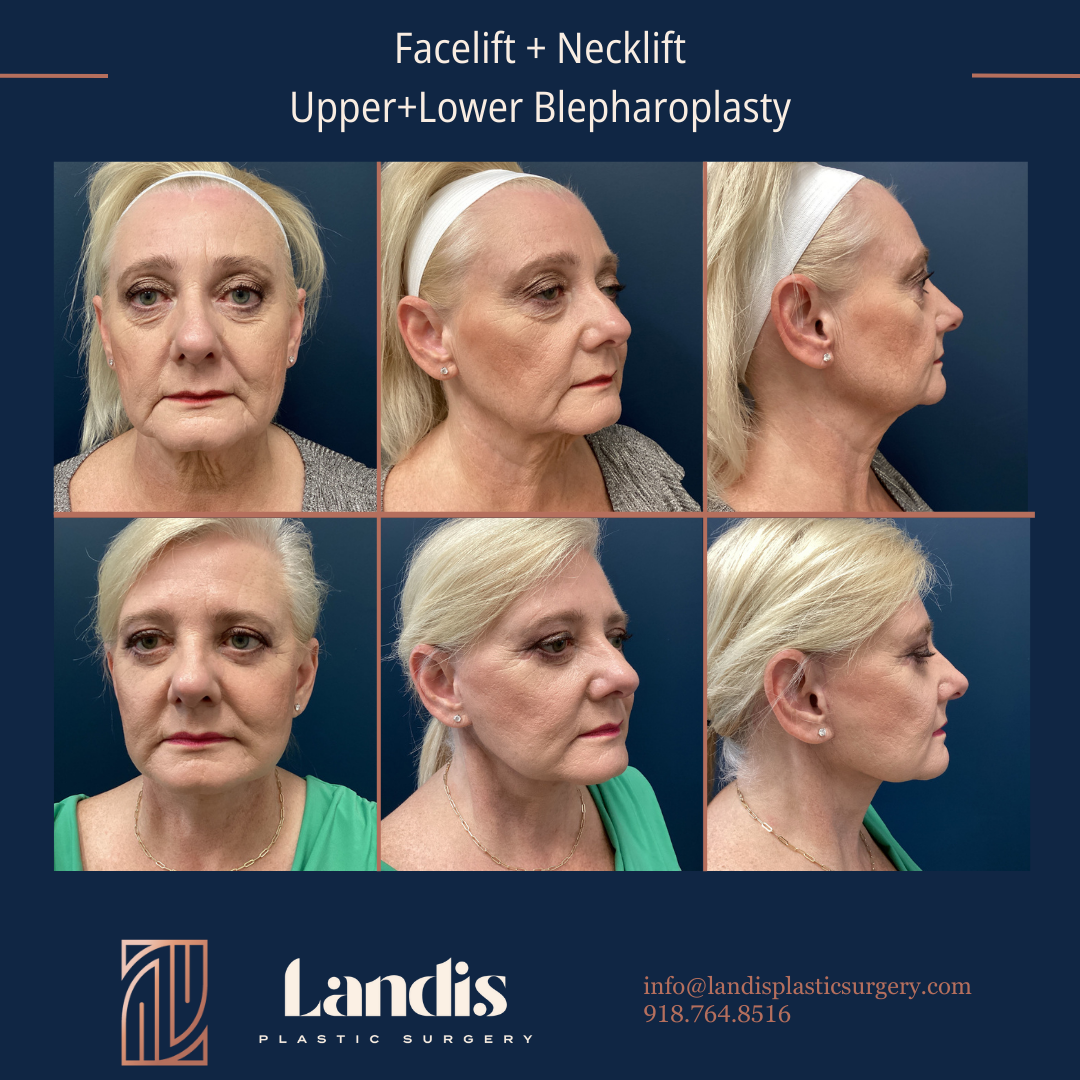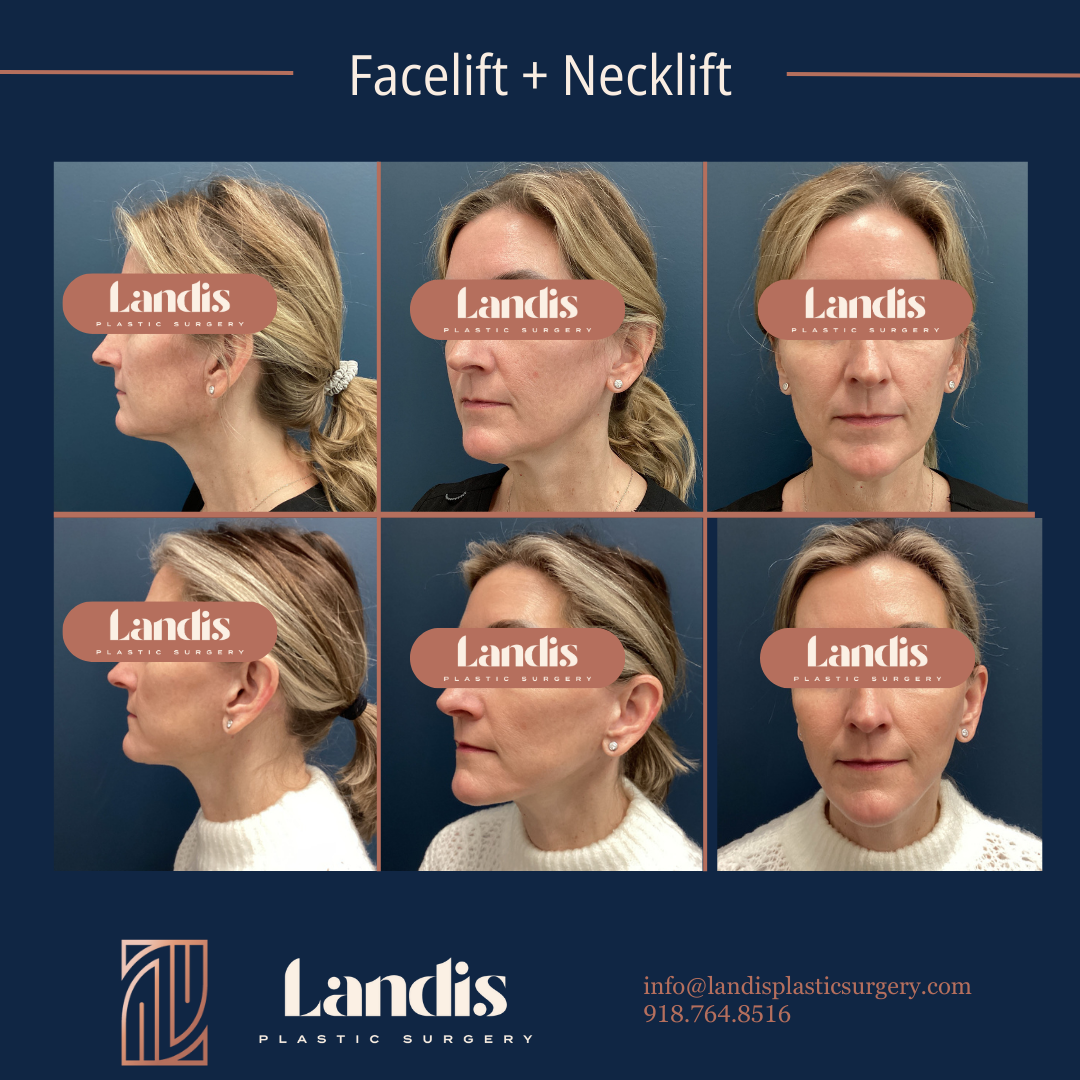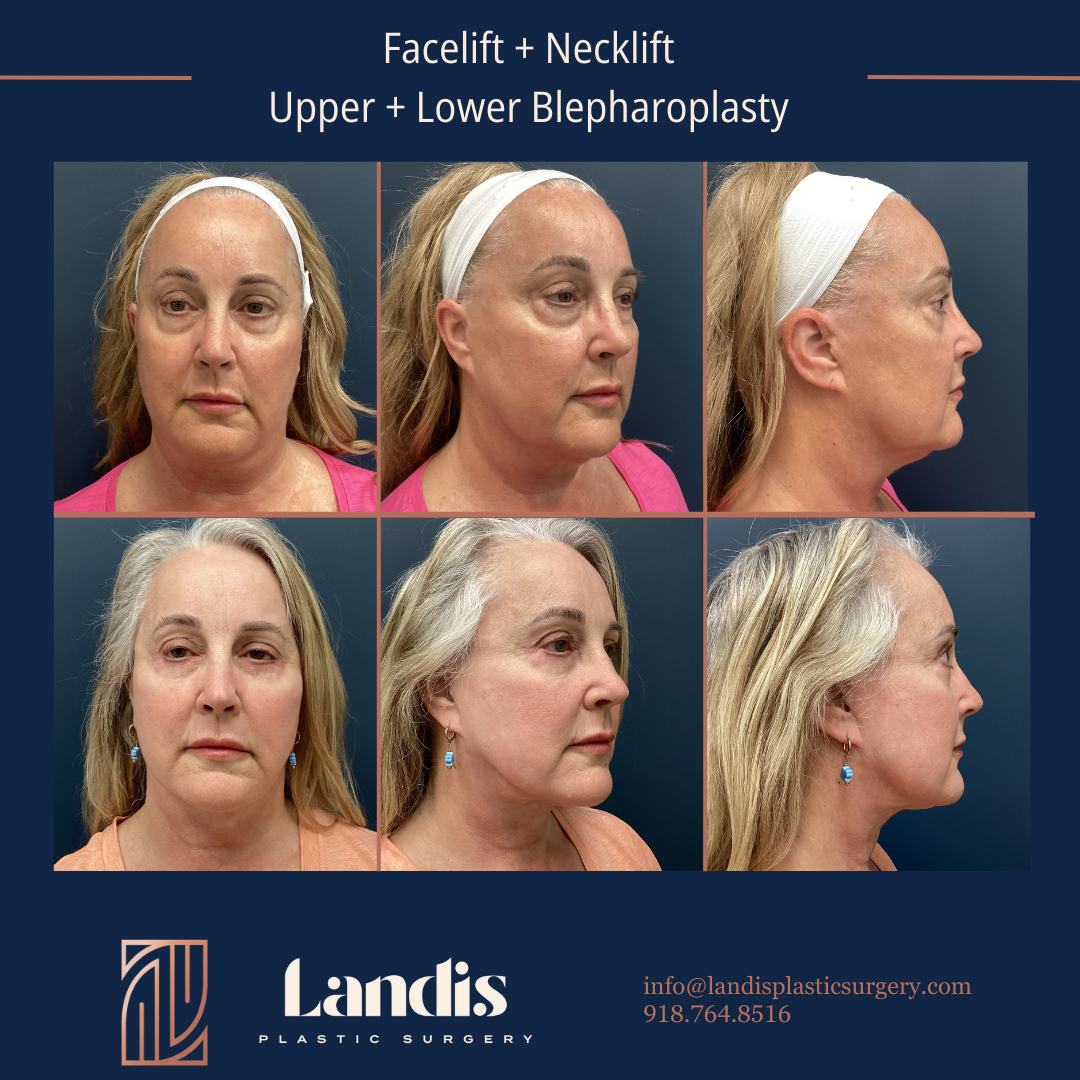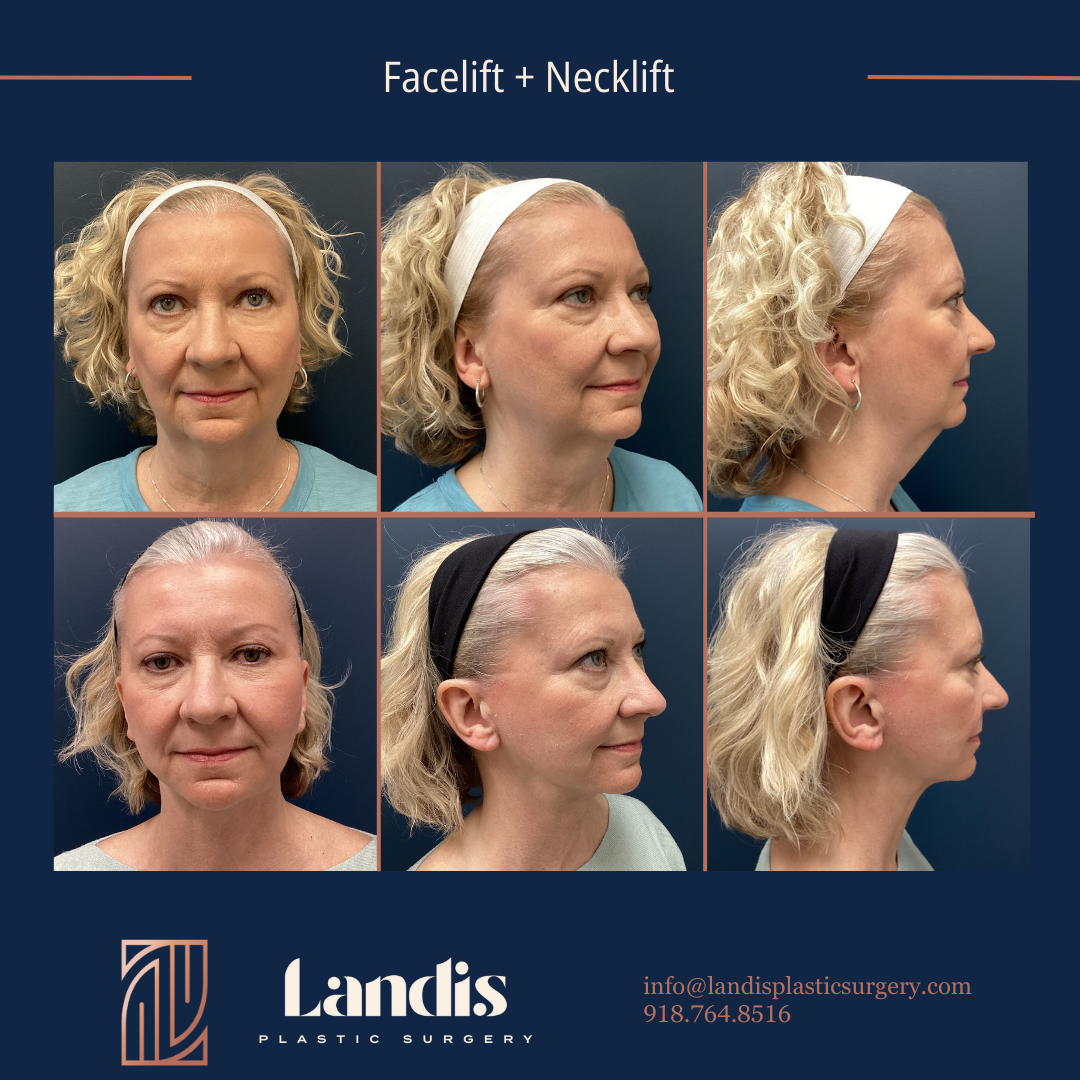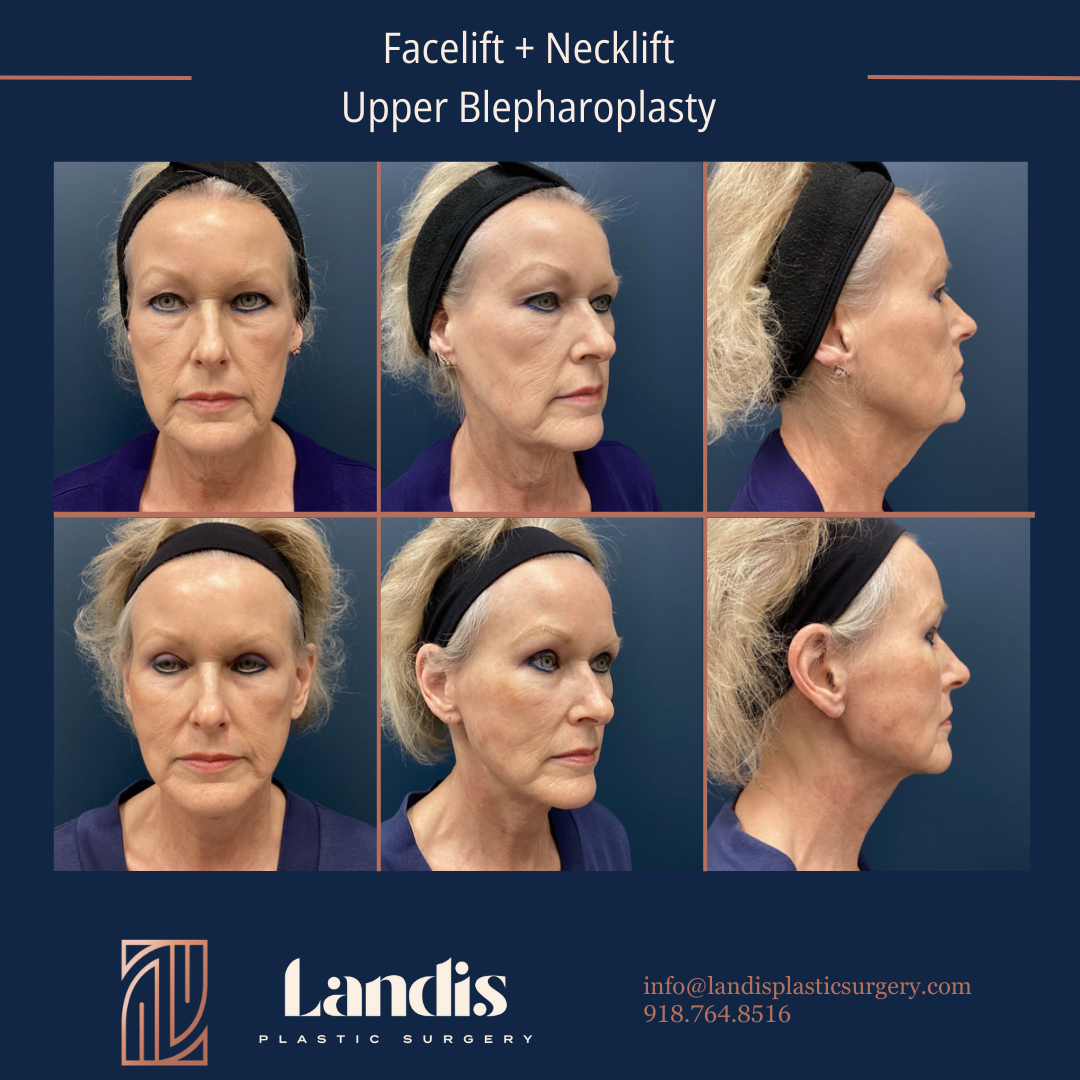Other Procedures
Other Procedures
Upper Blepharoplasty
Otoplasty
Lower Blepharoplasty
Lip Lift
Face Lift
SkinPen
Neck Lift
Injectables
Breast Augmentation
Breast Re-Augmentation
Breast Lift
Breast Augmentation + Lift
Breast Reduction
Breast Implant Removal
Breast Implant Removal + Lift
Breast Reconstruction Revision
Revision Breast Surgery
Breast Fat Grafting
Nipple Procedures
Gynecomastia Surgery
Mommy Makeover
Liposuction
Thigh Lift
Arm Lift
Abdominoplasty
Fleur-de-lis Abdominoplasty
Labiaplasty
Body Contouring
Scar Revision
Skin Lesion Removal
A facelift, also known as rhytidectomy, is a surgical procedure designed to rejuvenate the appearance of the face and neck. It targets sagging skin, deep wrinkles, and other signs of aging to restore a more youthful and refreshed look. A facelift can provide long-lasting results and improve self-confidence. Dr. Landis’s goal is always to restore a natural, more youthful appearance that looks like YOU- no one should look tight or overdone.
Reasons for a Facelift:
- Experience sagging skin: With age, the skin loses its elasticity, resulting in sagging and drooping. A facelift can tighten the underlying muscles and remove excess skin to restore a firmer and more lifted appearance. The jowls are a specific area of skin laxity that are treated with a facelift.
- Have deep wrinkles and folds: Deep wrinkles, such as nasolabial folds (lines extending from the nose to the mouth), marionette lines (lines extending from the corners of the mouth to the chin), and jowls (sagging skin along the jawline), can be reduced or eliminated through a facelift.
- Notice facial volume loss: Aging can lead to a loss of facial volume, making the face appear hollow or sunken. A facelift can address this by repositioning or adding fat or using dermal fillers during the procedure to restore volume to the face.
- Desire a more youthful appearance: Many individuals choose to undergo a facelift to regain a more youthful and refreshed appearance, boosting their self-esteem and confidence.
Procedure:
Facelift is performed under general anesthesia. This ensures the patient is asleep and comfortable during the procedure. Dr. Landis will make incisions in discreet locations, such as around the hairline and in natural creases around the ears. These incisions allow for access to the underlying tissues and ensure minimal visible scarring. The underlying facial muscles and tissues are lifted and tightened to create a more youthful contour. This may involve repositioning or removing excess fat and tightening the deeper layers of the face. The skin is then re-draped over the newly tightened facial structures, eliminating wrinkles and sagging. Any excess skin is trimmed, and the incisions are closed using sutures.
In some cases, additional procedures may be performed simultaneously with a facelift to enhance the overall results. These can include neck lift, eyelid surgery (blepharoplasty), brow lift, or fat transfer to restore volume.
Recovery and Aftercare:
Recovery from a facelift varies from patient to patient. You will receive specific instructions on how to care for your incisions, including keeping them clean and applying prescribed ointments or dressings as directed by Dr. Landis. Your initial dressings are removed the day after surgery in our office. Swelling and bruising are common after a facelift and may take several weeks to subside. Applying cold compresses (bags of peas) and keeping your head elevated can help reduce swelling and promote healing. Pain medication may be prescribed to manage any post-operative discomfort. It is important to take the medication as directed and communicate any concerns to Dr. Landis. Sutures will be removed within a week after surgery during a follow-up appointment with Dr. Landis.
It is important to follow Dr. Landis’ post-operative instructions regarding incision care, medication, and activity restrictions. Most patients can resume normal activities, including work and light exercise, within two to three weeks after surgery. Strenuous activities and heavy lifting should be avoided for 3 weeks. Protecting your skin from sun exposure and maintaining a healthy lifestyle can help prolong the results of your facelift. Regular skincare, including moisturizing and sun protection, is recommended. Many of our patients choose to have microneedling performed with the SkinPen® device. This further improves the appearance of scars.
Potential Risks and Complications:
Like any surgical procedure, a facelift carries potential risks and complications. These may include:
- Infection
- Bleeding
- Poor wound healing
- Nerve damage
- Scarring
- Hairline changes
- Facial asymmetry
- Numbness or changes in skin sensation
Dr. Landis will discuss these risks with you and address any concerns or questions you may have before deciding to undergo a facelift.
Cost:
Facelift cost includes the surgeon fee, facility fee, anesthesia fee, and any labs or imaging that may be required before or after surgery. The total cost for a facelift ranges from $17,500 – $20,000 and varies if any additional surgery is required. Dr. Landis will formulate a plan specific for each patient and a detailed estimate will be provided. CareCredit is available to our patients, and we’d be happy to discuss this option with you!
Conclusion:
A facelift is a surgical procedure that can effectively address sagging skin, deep wrinkles, and other signs of facial aging. It is essential to consult with a qualified, board-certified plastic surgeon like Dr. Landis to determine if a facelift is suitable for you and to discuss your goals, expectations, and potential risks. A personalized treatment plan will be created to achieve the desired results while ensuring the best possible outcome.
